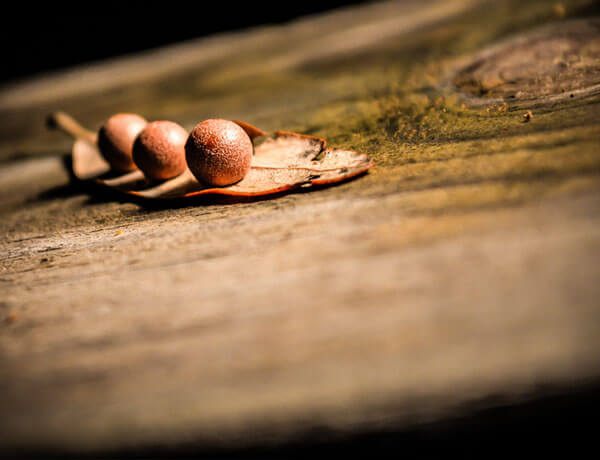-
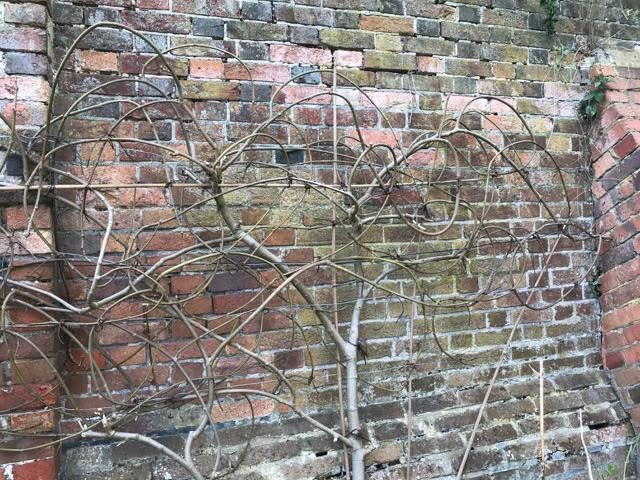
Springing into Action
21st March 2018 • In The Garden • Stephanie Donaldson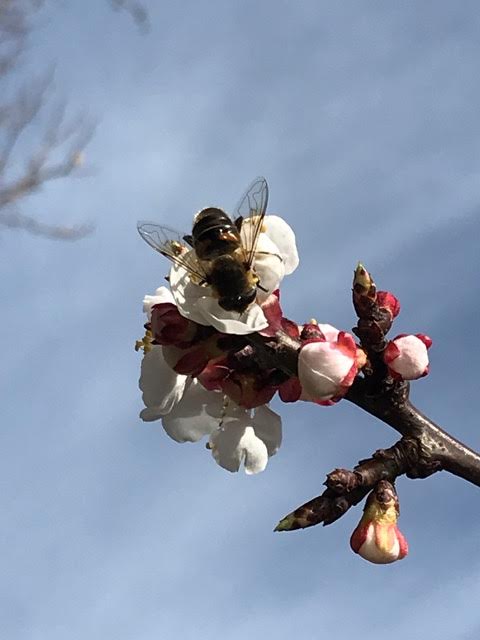
Bee pollinating apricot flowers before the return of the arctic weather
There are clear signs that spring has arrived, even though we currently have a brief return to arctic weather. The furry catkins on the pussy willow are fattening and showing silver, the first few flowers are unfurling on the apricot tree (I fear they won’t survive the cold) and, in amongst the bulbs and emerging perennials, the weeds have started growing. Once the east wind departs it is the time to get out and deal with the annual weeds while you can still get on the borders – it really is a case of a stitch in time saves nine – it’s fiddly work, but well worth the effort.
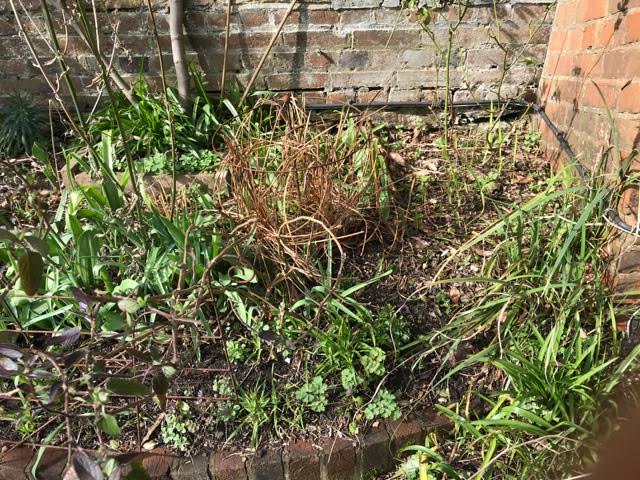
Before
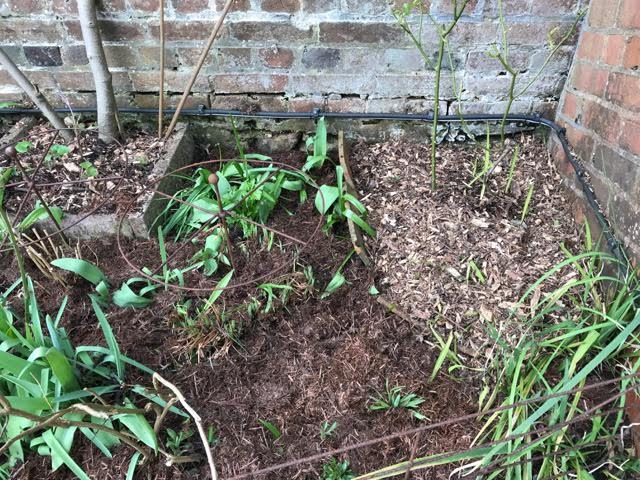
After
In good weather, I’ve been working my way methodically through the borders:
· cutting back what remains of last year’s growth on perennials and the deciduous grasses
· weeding before they get the upper hand
· pruning and manuring roses as well as summer and autumn flowering clematis
· tying in wall-trained trees and blackberries
· applying mulches
· starting to put plant supports in place

Fig
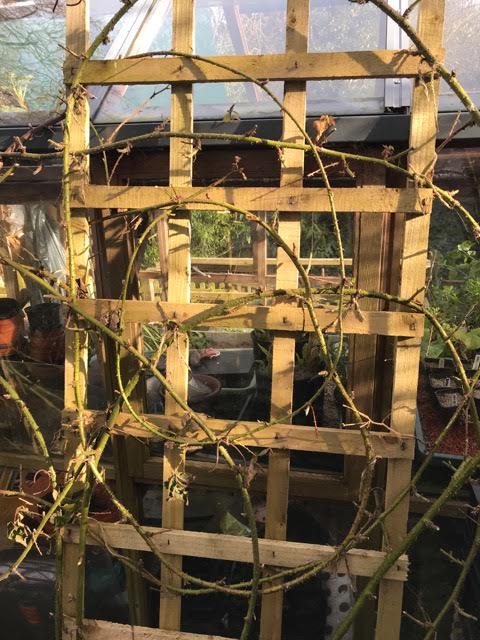
Blackberry
It’s satisfying work, turning scruffy borders into something much more kempt. Regular followers will know that I’m experimenting with a top dressing of low-nutrient, high-humus leaf mould rather than nutrient-rich garden compost. This is since the gardeners at Parham Park told me that they have found that this produces sturdier, more floriferous plants. So, what’s good enough for Parham is good enough for me. Once this is done, I add a weed supressing mulch of composted bark under shrubs and in the woodland garden, with Strulch (lightweight, mineralised straw mulch) on the borders. This will supress weeds and protect the plants from further cold in the short term and conserve moisture in the long term.
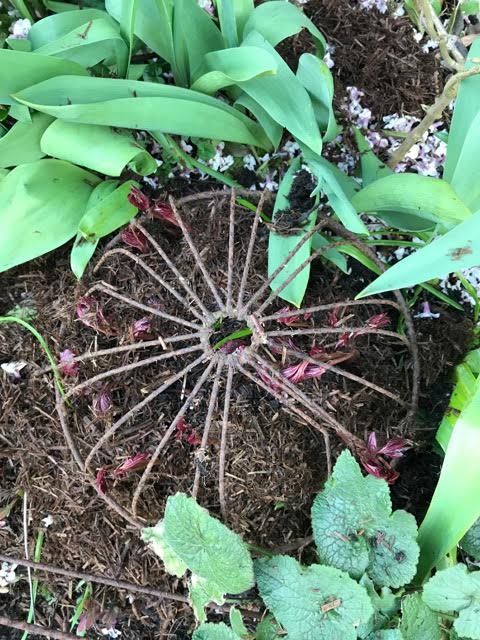
An old hanging basket protects emerging shoots
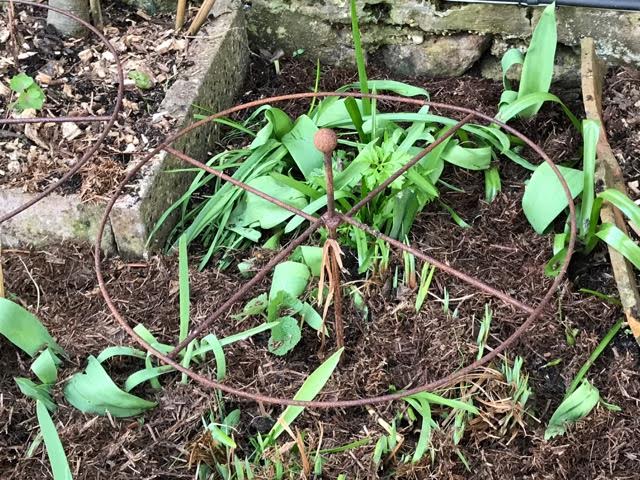
This wire support can be pulled higher to support the leaves as the Iris sibirica grows
An old hanging basket protects emerging shoots This wire support can be pulled higher to support the leaves as the Iris sibirica grows
My favourite of all plant supports is twiggy hazel, but I am finding it increasingly difficult to get any, so I now have some more long-lasting supports that help keep things in order. I’ve just bought more wire support rings from Hen & Hammock (£8.50 each) – the wire is looped through a chestnut stake that is knocked into the ground. I’ve found them perfect for paeonies, phlox and asters, giving discreet support. My first two of these are three years old and show no sign of deteriorating. I have also ordered two bundles of birch pea sticks and will continue looking for a source of hazel, but in the meantime at least some of the taller perennials are guaranteed to stand tall.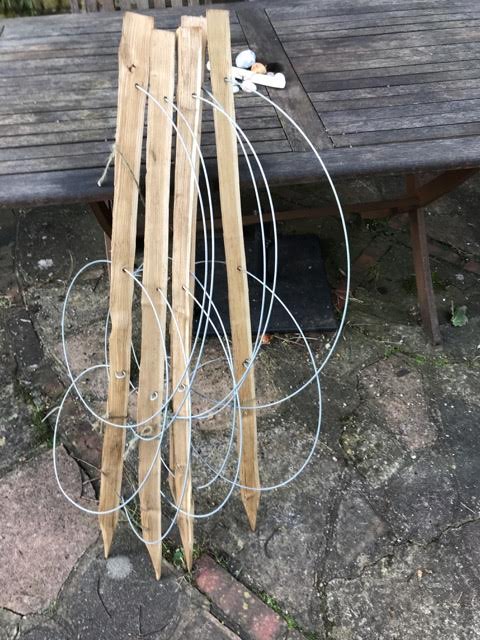

Chestnut and wire plant supports from Hen & Hammock



